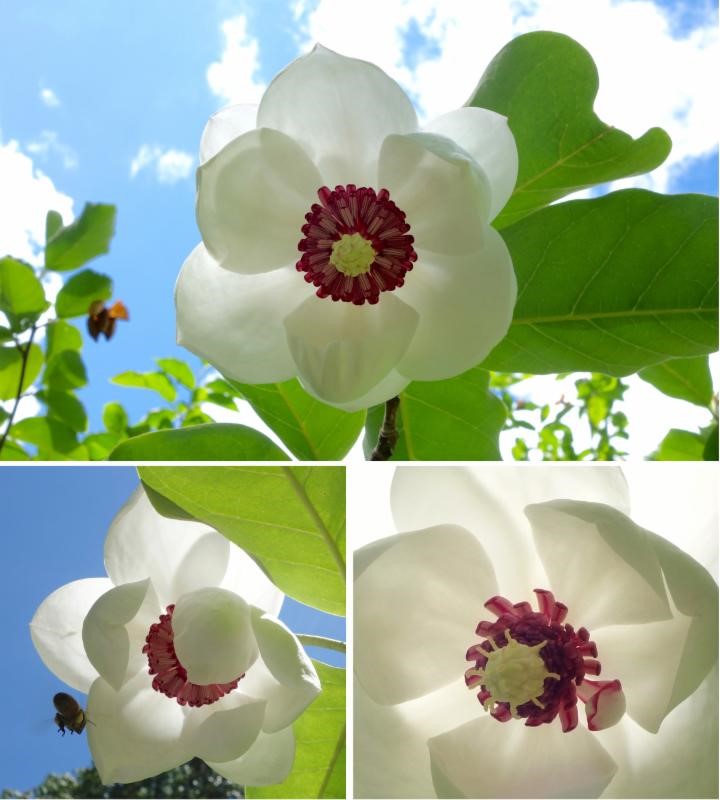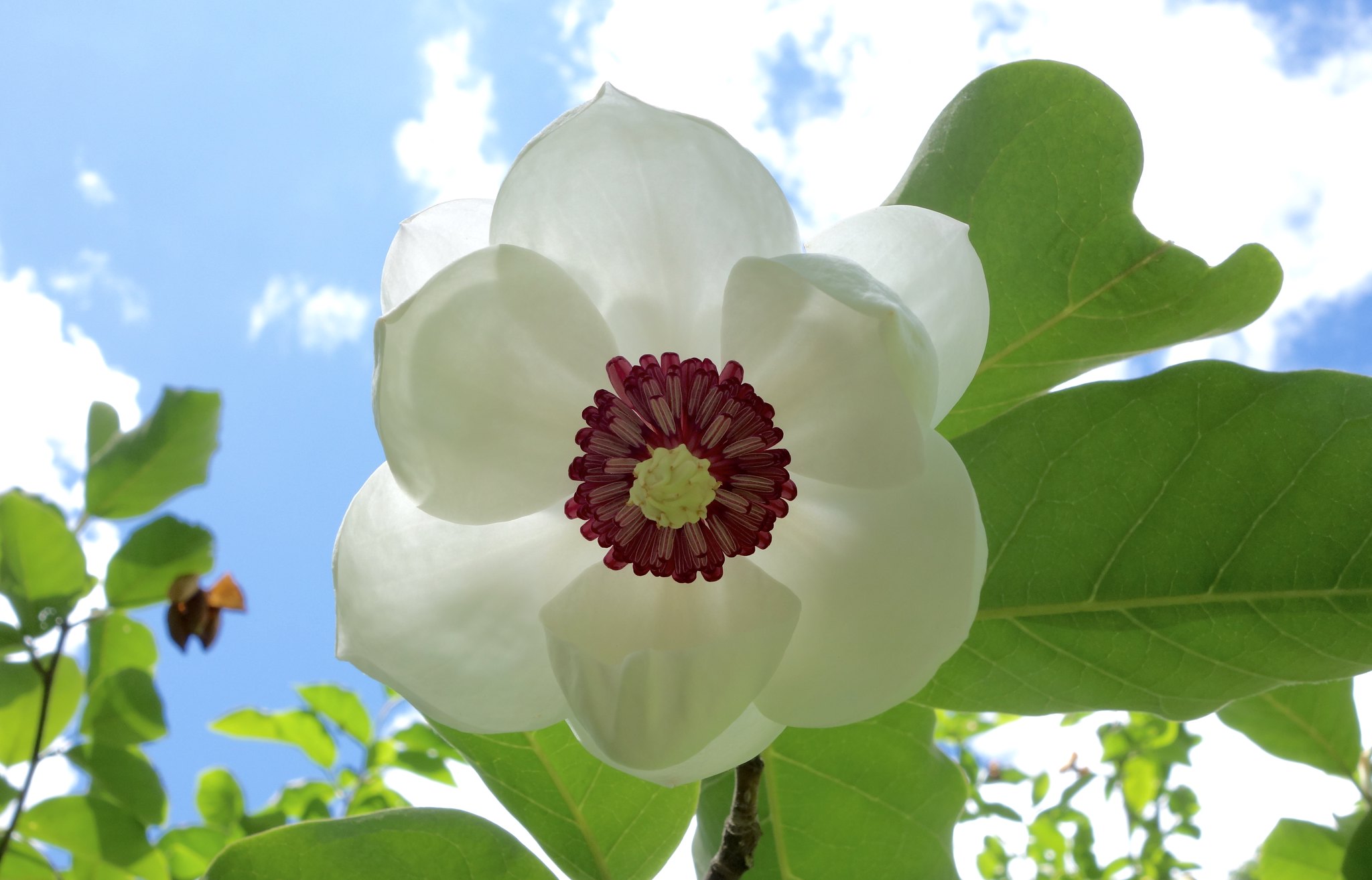
The spectacle of spring flowering magnolias at the Arnold Arboretum of Harvard University is a show to see. However, summer flowering magnolias such as the Oyama magnolia (Magnolia sieboldii), the bigleaf magnolia (Magnolia macrophylla), and the sweetbay magnolia (Magnolia virginiana), while more subtle, are also worthy of a pilgrimage. Right now, one of the Arnold Arboretum’s Oyama magnolias (404-97*C) is at its peak and magnificent. Against the blue sky (Friday, with cotton-ball clouds, upper picture), the petals glow in shades of white to creamy gray.
The flowers of Magnolia sieboldii are among my favorites, with a deep crimson to purplish “eye” comprised of stamens, the pollen producing organs. The central yellowish dome-shaped structure bears the female parts of the flower (carpels), with curled stigmas ready to receive pollen. Like all magnolias, floral gender is a two-day operation: on day one, the female parts are receptive and on day two, the male parts release their pollen. This gender system, called protogyny, is a brilliant way to ensure that hermaphrodite flowers do not end up pollinating themselves! On the bottom right, the flower is in female phase, and if you look carefully, you will see that the stamens have not yet opened. Typically, on day two, the stigmas appear brownish, a subtle indicator that their time has passed.
Two years ago, I captured this image (bottom left; 404-97*B) of a bee coming in for a landing on another Oyama magnolia at the Arnold. If you visit these trees next to the hickory collection, make sure to enjoy the bigleaf magnolias just yards away. Their flowers (like their leaves) are huge, often approaching a foot in diameter. For a terrific article on the floral biology of magnolias in Arnoldia, click here.
